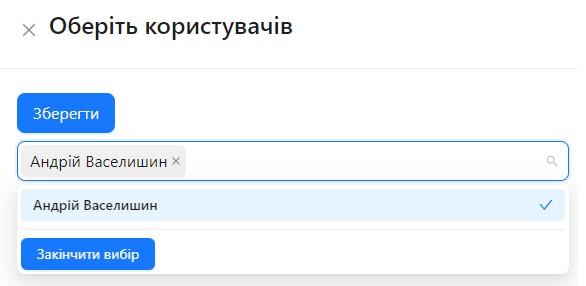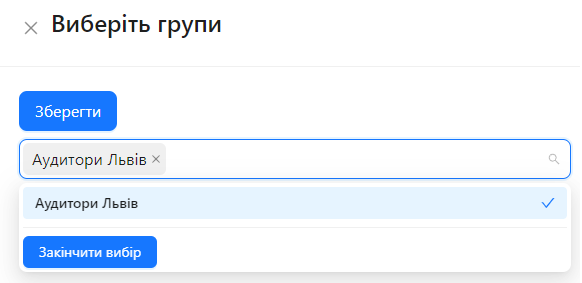Responsible Users for an Audit Object
This article explains how to assign responsible users and groups to audit objects and how inheritance of responsibilities works within the hierarchy.
Defining a Responsible Person:
Responsible users are individuals who participate in managing the object or its subordinate objects. These can include:
- Store Manager
- Café Administrator
- Workshop Supervisor
- Production Director
- Warehouse Manager
- and others.
Responsibilities of Responsible Individuals:
- Receive an inspection report via email after the audit is completed.
- Have access to audit results and can dispute any identified discrepancies.
- Have access to view tasks created based on issues identified during the audit.
One of the roles:
- Administrator
- Audit Objects Management
Type of workspace:
- Full workspace.
Step-by-Step Guide
Opening Audit Objects:
- Go to the "Directories" menu and select "Objects". Enter the desired audit object.
- Navigate to the "Responsible" tab.
Assigning Responsible Users:
- Click the "Add Users" button.
- In the window that opens, select users and click the "Save" button.
Removing Responsible Users:
Check the users to remove their responsibility and click the "Remove Users" button.
Assigning Responsible Groups:
- Click the "Add Users" button.
- In the window that opens, select groups and click the "Save" button.
Removing Responsible Groups:
Check the groups to remove their responsibility and click the "Remove User Groups" button.
Inheritance of Responsibilities:
If an object (Object 2) is subordinate to another object (Object 1), all responsible users and groups of Object 1 are automatically inherited by Object 2. This means all responsible users of Object 1 will also be responsible for Object 2. This is particularly useful for hierarchical structures.
- Inheritance helps automate the assignment of responsibilities in large structures.
- You can add additional responsible users directly to a subordinate object.
- Try to assign responsibilities to groups rather than individual users. This allows you to quickly update or add new employees. Simply adding a user to a specific group will automatically make them responsible.
Frequently Asked Questions (FAQ)
Question: Can the inheritance of responsible users be disabled?
Answer: No, this feature cannot be disabled.
Question: Can both users and groups be selected simultaneously?
Answer: Yes.




